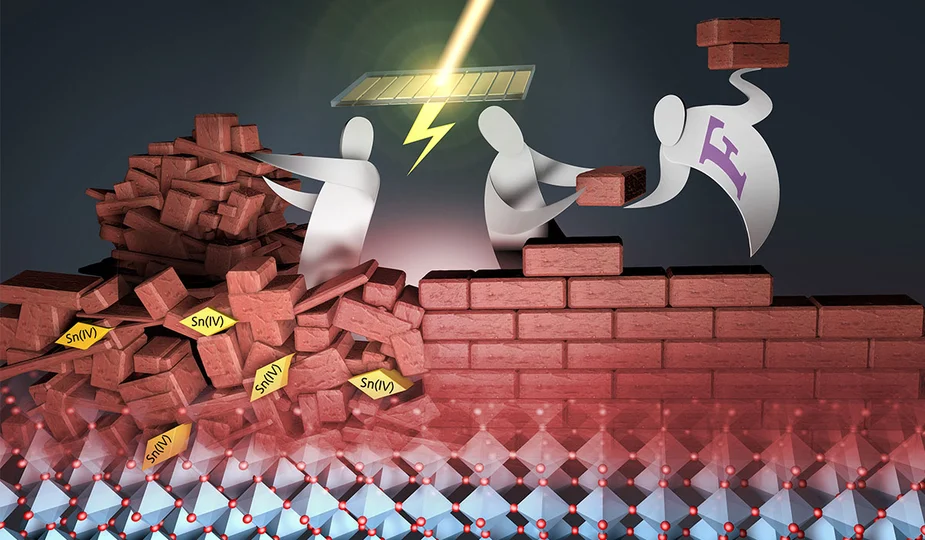HZB researchers provide new insights into lead-free perovskite solar cells
How fluoride additives improve quality
Tin halide perovskites are currently considered the best alternative to their lead-containing counterparts, which are, however, still significantly less efficient and stable. Now, a team led by Prof. Antonio Abate from HZB has analysed the chemical processes in the perovskite precursor solution and the fluoride compounds in detail. Using a clever combination of measurement methods at BESSY II and with NMR at the Humboldt-University Berlin, they were able to show that fluoride prevents the oxidation of tin and leads to a more homogeneous film formation with fewer defects, increasing the quality of the semiconductor layer.
Lead halide perovskite solar cells promise very high efficiencies at low manufacturing costs. However, the toxicity of lead poses serious environmental concerns, proving the need for lead-free alternatives. Tin is currently considered the best choice, but faces challenges regarding its oxidation and uncontrolled crystallization that restrains the respective solar cells in their production, performance and stability.
Tin fluoride helps
One of the most common strategies to obtain good quality tin-based perovskite thin-films involves the use of tin fluoride (SnF2) as an additive in the solution-based process. The improved optoelectronic and morphological properties of SnF2-containing films have been thoroughly characterised in literature, although the role of this additive remained underexplored.
Chemical behavior explored
Now, a team led by Prof. Antonio Abate has for the first time elucidated the important chemical role of SnF2 inside the perovskite solution that is responsible for these improvements. The key lies in the chemical behaviour of fluoride anions. Tin easily oxidises from Sn(II) to Sn(IV), generating defects in the semiconductor film. Data from nuclear magnetic resonance (NMR) analyses now showed that the fluoride anion from SnF2 has a strong affinity for Sn(IV) and forms the compound SnF4. Using hard X-ray photoelectron spectroscopy at BESSY II, the team was able to demonstrate that SnF4 shows a lower tendency to be entrapped in the perovskite structure compared to SnI4, resulting in less Sn(IV) content in the film. Finally, small-angle X-ray scattering measurements at BESSY II revealed that the fluoride appears to positively affect the nucleation process in the precursor solution, which improves crystallisation.
More homogeneous crystal growth
"To put it simply, fluoride anions trap oxidised Sn(IV) in the solution, as SnF4. The lower affinity of this material to perovskite-like species prevents its inclusion in the perovskite film," says Jorge Pascual, a postdoc from Abate’s group working on tin halide perovskites. "In addition, fluoride improves the colloid stability of tin halide perovskite precursor solutions, precursor subunits creating a more uniformly distributed oriented attachment, resulting in a more homogeneous crystal growth," explains Marion Flatken, who carried out the research as part of her PhD in the same team.
These results come at the right time. Based on this study, it might be possible to explore other promising additives that further improve the properties of lead-free perovskite solar cells.
Contact:
Helmholtz-Zentrum Berlin für Materialien und Energie
Novel Materials and interfaces for photovoltaic solar cells
Marion Flatken
marion.flatken(at)helmholtz-berlin.de
Jorge Pascual Mielgo
jorge.mielgo(at)helmholtz-berlin.de
Press Release Helmholtz Zentrum Berlin 26th July 2021
